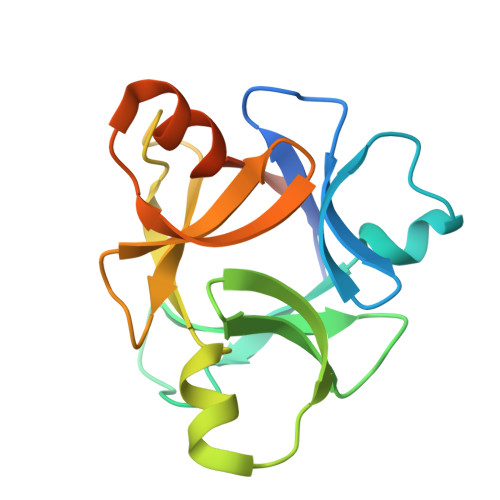Family 42 carbohydrate-binding modules display multiple arabinoxylan-binding interfaces presenting different ligand affinities.
Ribeiro, T., Santos-Silva, T., Alves, V.D., Dias, F.M., Luis, A.S., Prates, J.A., Ferreira, L.M., Romao, M.J., Fontes, C.M.(2010) Biochim Biophys Acta 1804: 2054-2062
- PubMed: 20637315
- DOI: https://doi.org/10.1016/j.bbapap.2010.07.006
- Primary Citation of Related Structures:
3KMV - PubMed Abstract:
Enzymes that degrade plant cell wall polysaccharides display a modular architecture comprising a catalytic domain bound to one or more non-catalytic carbohydrate-binding modules (CBMs). CBMs display considerable variation in primary structure and are grouped into 59 sequence-based families organized in the Carbohydrate-Active enZYme (CAZy) database. Here we report the crystal structure of CtCBM42A together with the biochemical characterization of two other members of family 42 CBMs from Clostridium thermocellum. CtCBM42A, CtCBM42B and CtCBM42C bind specifically to the arabinose side-chains of arabinoxylans and arabinan, suggesting that various cellulosomal components are targeted to these regions of the plant cell wall. The structure of CtCBM42A displays a beta-trefoil fold, which comprises 3 sub-domains designated as alpha, beta and gamma. Each one of the three sub-domains presents a putative carbohydrate-binding pocket where an aspartate residue located in a central position dominates ligand recognition. Intriguingly, the gamma sub-domain of CtCBM42A is pivotal for arabinoxylan binding, while the concerted action of beta and gamma sub-domains of CtCBM42B and CtCBM42C is apparently required for ligand sequestration. Thus, this work reveals that the binding mechanism of CBM42 members is in contrast with that of homologous CBM13s where recognition of complex polysaccharides results from the cooperative action of three protein sub-domains presenting similar affinities.
Organizational Affiliation:
CIISA-Faculdade de Medicina Veterinária, Pólo Universitário do Alto da Ajuda, Avenida da Universidade Técnica, 1300-477 Lisboa, Portugal.



























